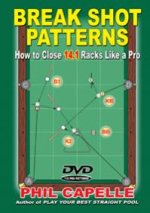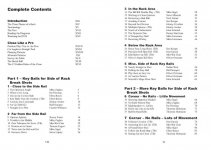Hey guys,
I just learned on Facebook that Mr Capelle has a new 14.1 book on the market called " break shot patterns". I believe he has a combo deal on it as well.
I look forward to reading another great lesson plan by one of the greats.
Here's the site !
http://www.billiardspress.com/
Check it out !
-Steve
I just learned on Facebook that Mr Capelle has a new 14.1 book on the market called " break shot patterns". I believe he has a combo deal on it as well.
I look forward to reading another great lesson plan by one of the greats.
Here's the site !
http://www.billiardspress.com/
Check it out !
-Steve


